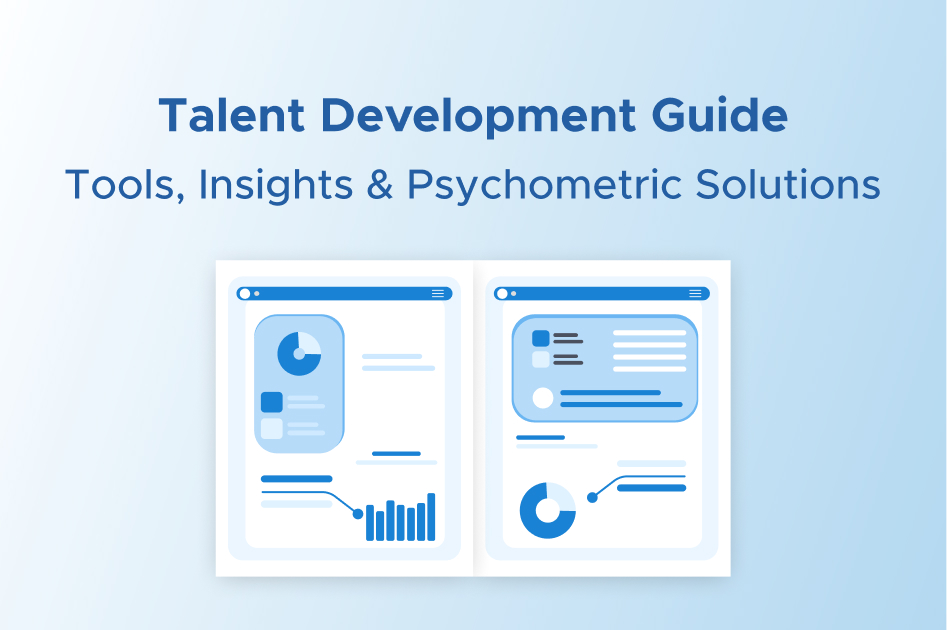From Mindset to Metrics: Measuring the Impact of Attitudes on Job Success

An employee's attitude in the workplace plays a bigger role than most employers think. It’s not just about how skilled someone is or how much experience they have. It’s also about how they show up every day: how they think, treat others, handle pressure, and how willing they are to grow and contribute as a team.
This focus on mindset is especially important now. Industries across the GCC and MENA regions are expanding quickly, and governments are pushing for economic transformation through national development plans like Saudi Arabia’s Vision 2030 and the UAE’s focus on innovation and global partnerships. As companies hire people from diverse backgrounds, cultures, and countries, attitude is key in shaping workplace culture, team performance, and long-term business success.
But even though attitude matters so much, many companies still don’t measure it effectively. Instead, they invest heavily in performance measurement and overlook the mindset driving these outcomes.
At Zenithr, we help businesses understand how their staff think, feel, and behave. With our help, HR teams can access insights into employee mindset, morale, and engagement to help them address potential problems and build more successful companies.
Let’s look at how to connect mindset with results and why your organization can’t afford to ignore what’s happening beneath the surface.
What Employee Attitude Means in the Workplace
An employee's work attitude impact doesn’t just refer to their mood on a certain day. It’s the way people:
● Think about their job
● How they respond to challenges
● How much they care about their work
● How they choose to behave toward others
It’s also their beliefs, emotions, and willingness to take responsibility, improve, or support the team.
Simply put, attitude determines how employees show up each day, both mentally and emotionally, and it influences almost everything they do, whether they realize it or not.
In many ways, attitude is the employee mindset behind the action. You might have two employees with the same role, training, and targets, but different results simply because one has a more positive, focused, and committed attitude than the other.
Over time, these differences become visible in the outcomes the business cares about, such as:
● How productive someone is
● How long they stay with the company
● How well they contribute to a healthy team culture
● How customers experience the brand
That’s why companies must stop treating attitude as vague or “soft.” While it may not be as easy to measure as output or deadlines, it has a clear and direct impact on performance, retention, and collaboration.
In fact, many HR professionals across the GCC and MENA region are now realizing that measuring and understanding employee attitude is essential in their multicultural and high-pressure work environments.
When companies can identify the attitudes driving success, or blocking it, they can take meaningful steps to coach, support, or develop their people in the right direction.
How Attitudes Influence Behavior
What people believe about their work and how they feel about it shows up in what they do every single day. You’ll notice it in how they:
● Handle feedback
● Deal with pressure
● Treat their teammates
● Respond to small setbacks
People with a positive attitude tend to focus on moving forward instead of dwelling on mistakes. They will speak openly, listen to others, and offer help without being asked. These behaviors build trust, improve communication, and lead to better team results. Their positive energy also helps motivate others and keep the team moving forward.
There’s something else that plays a big part here: job satisfaction. When people feel that their work matters, that their opinion counts, and that their efforts are recognized, they’re more likely to feel good about their actions.
On the other hand, when someone feels ignored or overworked for too long, even the most skilled employee might start to withdraw or lose focus. Their attitude changes, and their behavior follows.
A negative mindset, however, can block communication, slow progress, and quietly erode trust. That’s where culture plays a role; when enough people share the same attitude, it shapes how the workplace feels and operates.
So, if you want a resilient, productive, and forward-moving workplace, it makes sense to start with the attitudes shaping it behind the scenes.
How HR Can Measure Attitudes
HR teams need to use observation, feedback, and structured tools to know how employees think, feel, and work. The good news is that there are already practical tools available that make this easier to understand and act on.
Here are a few ways HR teams can better understand employee attitudes, using tools beyond surface-level impressions and offering more reliable, actionable insights.
1. Pulse Surveys and Engagement Questionnaires
Pulse surveys and engagement questionnaires let employees quickly share how they feel about their team, manager, workload, or even the company’s direction. These tools work best when short and frequent, capturing real-time feedback without feeling like a burden.
These surveys work well because they give everyone a voice, including those who may not speak up in meetings or one-on-ones. When the questions are thoughtfully designed, the results can uncover patterns like low motivation, disconnection, or growing frustration that might otherwise be missed.
2. 360° Feedback
360° feedback gives a well-rounded view of someone’s behavior by regularly gathering input from the people they work with. Since attitude shows up in everyday moments, like handling feedback, supporting teammates, or managing conflict, this feedback helps highlight those patterns clearly.
When done well, 360° feedback becomes more than just a collection of comments. It opens up conversations about self-awareness, emotional intelligence, and team dynamics. For example, someone might learn they seem dismissive in meetings without knowing it, or realize they’re seen as a steady, supportive presence during stressful times.
3. Behavioral and Psychometric Assessments
Some companies use structured assessments that dig into personality traits, thinking styles, and emotional responses. These tools, often called behavioral or psychometric assessments, aren’t about labeling people or predicting their future. They’re meant to help understand what makes someone tick, how they naturally approach problems, relate to others, and respond to stress or change.
Using these tools together gives a clearer view of someone’s attitude at work. It’s not about judging them but understanding them and offering the right support. With that insight, you’re not just tracking attitude but creating a workplace where people want to do their best.
Zenithr’s Solutions
Every company wants motivated, engaged people who bring energy to their work and help teams succeed. But you can’t improve what you don’t fully understand. Zenith comes in as a strategic partner that helps you connect how your people feel with how they perform.
Here’s how we help you do that:
● Employee Experience Surveys: These short, regular check-ins help you get a real-time view of people's feelings. You'll know whether they’re motivated, stressed, confused, or excited.
● Competency & Psychometric Assessments: These tools give you a deeper look at how an employee’s mindset aligns with their job. It’s not just about skills on paper, but how someone works under pressure, solves problems, or deals with feedback.
● Zenithr Elevate : Explore your team’s strengths and motivations in depth. Thomas' psychometric assessments facilitate improved team dynamics, guiding data-driven decisions that enhance individual contributions and create a thriving workplace.
From Insight to Action
Having the data is just the beginning. What truly matters is how you use it. With Zenithr, you can start making smarter, more targeted decisions once you understand how your people are feeling and performing.
Zenithr helps you take this kind of insight and turn it into action. Over time, those small, focused improvements build real momentum, shaping a workplace culture where feedback is part of the process and people know their mindset matters just as much as their output.
Want to see it in action? Request a free demo or a custom report from Zenithr. You’ll discover how mindset metrics can transform how you build teams, develop talent, and lead with greater clarity and confidence.
Related posts
Explore moreEmotional Intelligence Assessments for Recruitment

A Better Approach to Succession Planning Using Assessment Data

